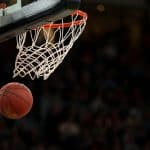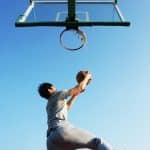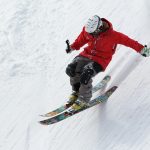As a participant in the world of sports, particularly martial arts, you are undoubtedly keenly aware of the risk of injury. Concussions, in particular, are a common thread that weaves through every contact sport, from football and rugby to boxing and jiu-jitsu. Recent studies have shown that martial artists are at an increased risk of sustaining a concussion due to the high-impact nature of their sport. However, advancements in technology, training methods, and safety equipment have brought hope to the arena of concussion prevention. Let’s delve into the latest developments that are safeguarding the brains of UK martial artists.
Understanding the Impact of Concussions
Before we explore the advancements in prevention, it’s crucial to understand the impact of concussions on athletes. Concussions are traumatic brain injuries that occur due to a blow to the head or body. These injuries can cause a variety of symptoms, including headaches, confusion, dizziness, and issues with balance and coordination.
A lire également : What are the top strategies for UK boxers to analyze and adapt to opponents' fighting styles?
A study by Google Scholar reveals that repeated concussions can lead to long-term brain damage, including chronic traumatic encephalopathy (CTE), a degenerative brain disease found in athletes with a history of repetitive brain trauma. In the world of martial arts, where strikes to the head are part of the sport, the risk of sustaining a concussion is particularly high.
Advances in Diagnostic Tools
Early detection and management of concussions can significantly reduce the risk of long-term damage. As such, advancements in diagnostic tools are a vital component of concussion prevention.
En parallèle : How can UK Aikido athletes enhance their fluidity and motion efficiency through targeted exercises?
One such tool is the SRC (Sports-Related Concussion) app, which uses a symptom checklist, cognitive assessment, and balance testing to help identify potential concussions. Another promising development is the use of Google’s machine learning algorithms. These algorithms analyze a player’s symptoms, biomechanics, and medical history to predict the likelihood of a concussion.
A recent study listed on CrossRef and DOI highlights the potential of these tools, showing that early, accurate diagnosis of concussions can lead to better treatment outcomes, reducing the risk of future concussions and long-term brain damage.
Impact of Training and Awareness
Prevention is always better than cure, and in the realm of sports injuries, this statement rings particularly true. The emphasis on concussion prevention has led to significant advancements in training protocols and increased awareness among athletes and coaches.
Research studies have shown that certain exercises can strengthen the neck muscles, reducing the impact force on the brain during a collision. Additionally, martial arts training now often includes education on concussion symptoms and the importance of immediate reporting and treatment.
Moreover, the UK government has launched awareness campaigns educating athletes on the dangers and symptoms of concussions, encouraging safer practices in sports.
Technological Advancements in Safety Equipment
In the realm of martial arts, safety equipment plays a critical role in preventing concussions. Technological advancements in this area are, therefore, essential. Innovative design modifications have led to the development of headgears and mouthguards that distribute the force of a blow, reducing the impact on the brain.
Google has patented a smart mouthguard equipped with sensors that can detect the severity of impacts. In case of a potentially dangerous impact, the device sends a warning signal, allowing the athlete or coach to take immediate action.
Influence of Policy Changes
It’s not just technology and training that are driving improvements in concussion prevention. Changes in policy and regulations also play a critical role. Several sporting bodies in the UK have introduced rules limiting the number of full-contact training sessions, reducing the risk of concussions during practice.
Moreover, return-to-play protocols are getting stricter, ensuring that athletes have fully recovered before re-entering the field. This reduces the risk of repeated concussions, which can have a compounding effect on brain health.
The risk of concussions in sports, particularly martial arts, is a serious concern. However, advancements in diagnostic tools, training methods, safety equipment, and policy changes are making significant strides in concussion prevention. These developments reflect a commitment to protect athletes, preserving the integrity of sports while safeguarding the health and wellbeing of its participants. While the risk cannot be entirely eliminated, these advancements ensure that athletes are better protected than ever before.
Optimising Protective Gear for Combat Sports
In combat sports, protective gear is a critical line of defence against head injuries, particularly concussions. Manufacturers of martial arts equipment are continuously working on innovations to provide better protection against forceful head impacts, a common occurrence in sports like boxing, jiu-jitsu, judo and karate.
New-generation protective headgear is designed to provide maximum protection without compromising the athlete’s mobility or vision. The focus is on creating equipment that can absorb and distribute the force of the impact, thereby reducing the severity of the blow received by the brain. For instance, RDX Sports, a UK-based company, uses gel-lining technology in their headguards to provide shock absorption, effectively reducing the risk of concussions.
Google’s ventures into sports technology have led to the development of a smart mouthguard. This device is equipped with sensors that can measure the severity of an impact. In case of a significant force, it sends a warning signal to the athlete or their coach, prompting immediate action. This real-time detection and notification system are critical in minimising the effect of potential concussions.
Research published on CrossRef and Google Scholar indicates that the use of such advanced protective gear can lower the incidence of concussions in combat sports. As technology progresses, we can hope to see more innovative solutions that can help protect our athletes from traumatic brain injuries.
Conclusion: A United Front Against Sports Concussions
The advancements in concussion prevention for UK martial artists are the result of concerted efforts from different directions. Cutting-edge diagnostic tools like the SRC app and Google’s machine learning algorithms are improving the detection and management of concussions. Training protocols have been modified to include exercises that strengthen the neck muscles and education about concussion symptoms. Technological innovations are leading to the development of safety equipment that can better protect athletes from severe head impacts.
Policy changes, too, have played a significant role. Sports bodies in the UK have imposed restrictions on the number of full-contact training sessions to minimise the risk of concussions. Return-to-play protocols have become stricter, ensuring that athletes are fully recovered before they step back into the ring.
The arena of sports medicine, as evident through sources like Google Scholar, CrossRef and Sports Med, is making significant strides in the prevention and management of sports concussions. However, it is crucial to remember that concussion prevention is a collective responsibility. Athletes, coaches, sporting bodies, medical professionals and policy-makers must continue to work together to ensure the safety of our athletes. While the risk of concussions cannot be entirely eradicated, these advancements are making martial arts safer, sustaining the spirit and integrity of these sports. As they say in the world of mixed martial arts and boxing, “protect yourself at all times.”











